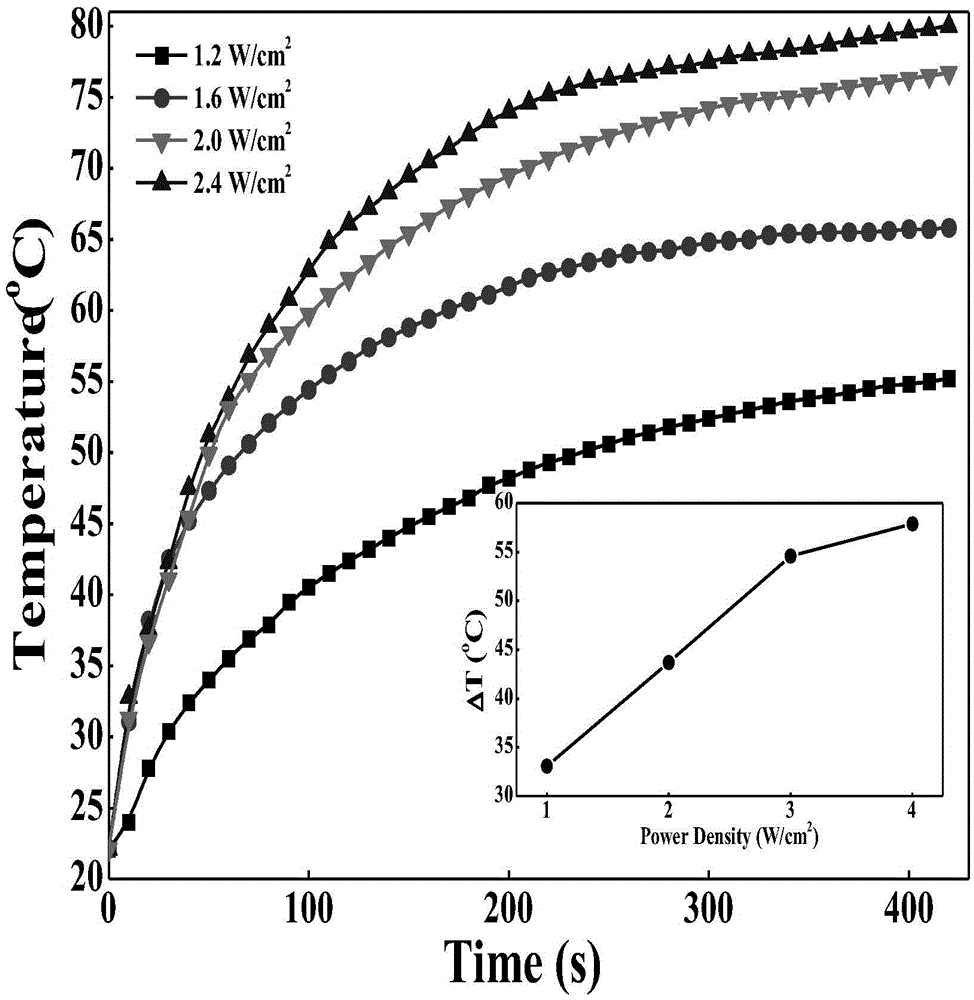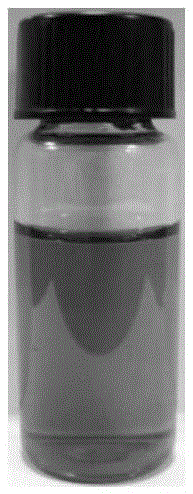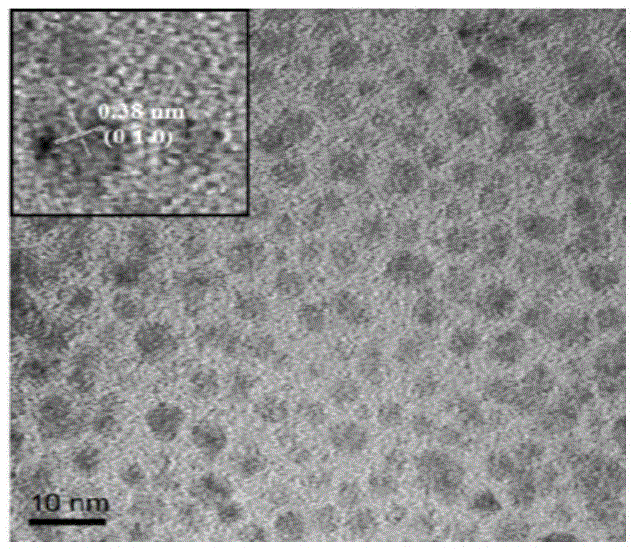Preparation and application of nanoparticles for thrombus-targeting and thermal-ablation
A nanoparticle, thermal ablation technology, applied in nanotechnology for materials and surface science, preparations for in vivo experiments, nanotechnology, etc., can solve combined circulatory dysfunction, systemic hemorrhage, and systemic hyperfibrinolysis and other problems to achieve the effect of overcoming continuous activation
- Summary
- Abstract
- Description
- Claims
- Application Information
AI Technical Summary
Problems solved by technology
Method used
Image
Examples
Embodiment 1
[0030] (1), weigh WCl 6 200 mg, dissolved in 50 mL of ethylene glycol under nitrogen protection, stirred and dissolved at room temperature to obtain a golden yellow solution, then added 300 mg of polyacrylic acid polymer with a molecular weight of 5KDa, stirred until completely dissolved, and then under nitrogen protection at 140°C Stir the reaction. After the system is heated, it is dark brown at first, then turns blue-green after 30 minutes, and finally turns dark blue after 1 hour, and remains unchanged. Continue heating for 1.5 hours, then cool down to 80 ° C, add 50 mL of deionized water, Continue to stir and react for 1 h, stop heating, centrifuge and purify the reacted solution, discard the supernatant, wash and disperse the product with deionized water, repeat this washing process three times, and finally obtain the purified product, which is dark blue W 18 o 49 granular powder ( figure 1 ), TEM shows that its average particle size is 4.9nm ( figure 2 ),
[0031] ...
Embodiment 2
[0035] (1), weigh WCl 6 200 mg, dissolved in 50 mL of ethylene glycol under nitrogen protection, stirred and dissolved at room temperature to obtain a golden yellow solution, then added 300 mg of polyacrylic acid polymer with a molecular weight of 5KDa, stirred until completely dissolved, and then under nitrogen protection at 140°C Stir the reaction. After the system is heated, it is dark brown at first, then turns blue-green after 30 minutes, and finally turns dark blue after 1 hour, and remains unchanged. Continue heating for 1.5 hours, then cool down to 80 ° C, add 50 mL of deionized water, Continue to stir and react for 1 h, stop heating, centrifuge and purify the reacted solution, discard the supernatant, wash and disperse the product with deionized water, repeat this washing process three times, and finally obtain the purified product, which is dark blue W 18 o 49 granular powder ( figure 1 ), TEM shows that its average particle size is 4.9nm ( figure 2 ),
[0036] ...
Embodiment 3
[0040] (1) 5ml, 0.2M cetyltrimethylammonium bromide (CTAB) was added to 5ml, 0.5mM HAuCl 4 After stirring and dissolving in the solution, add 0.6ml of 1.0mM sodium borohydride to react to obtain a blue solution.
[0041] (2) Take 0.912g CTAB and 0.08g sodium salicylate, dissolve them in 25ml of distilled water, after the dissolution is complete, add 0.5ml, 4mM silver nitrate, put it in a water bath at 30°C for about 15min, then add 25ml, 1mM HAuCl 4 and 0.2ml concentrated hydrochloric acid, stirred gently for 15min, then added 300 microliters of 0.1M ascorbic acid to obtain a colorless solution. Finally, 80 microliters of the blue solution obtained in step 1 was added, and after reacting for 12 to 24 hours, the reaction was terminated, centrifuged at 8500 rpm, and washed with distilled water three times. Gold nanorods were obtained with an aspect ratio of 4( image 3 ). Measure the ultraviolet absorption spectrum, and the obtained absorption peak has a small peak at ~523nm,...
PUM
| Property | Measurement | Unit |
|---|---|---|
| particle diameter | aaaaa | aaaaa |
| particle diameter | aaaaa | aaaaa |
| molecular weight | aaaaa | aaaaa |
Abstract
Description
Claims
Application Information
 Login to View More
Login to View More - R&D
- Intellectual Property
- Life Sciences
- Materials
- Tech Scout
- Unparalleled Data Quality
- Higher Quality Content
- 60% Fewer Hallucinations
Browse by: Latest US Patents, China's latest patents, Technical Efficacy Thesaurus, Application Domain, Technology Topic, Popular Technical Reports.
© 2025 PatSnap. All rights reserved.Legal|Privacy policy|Modern Slavery Act Transparency Statement|Sitemap|About US| Contact US: help@patsnap.com



